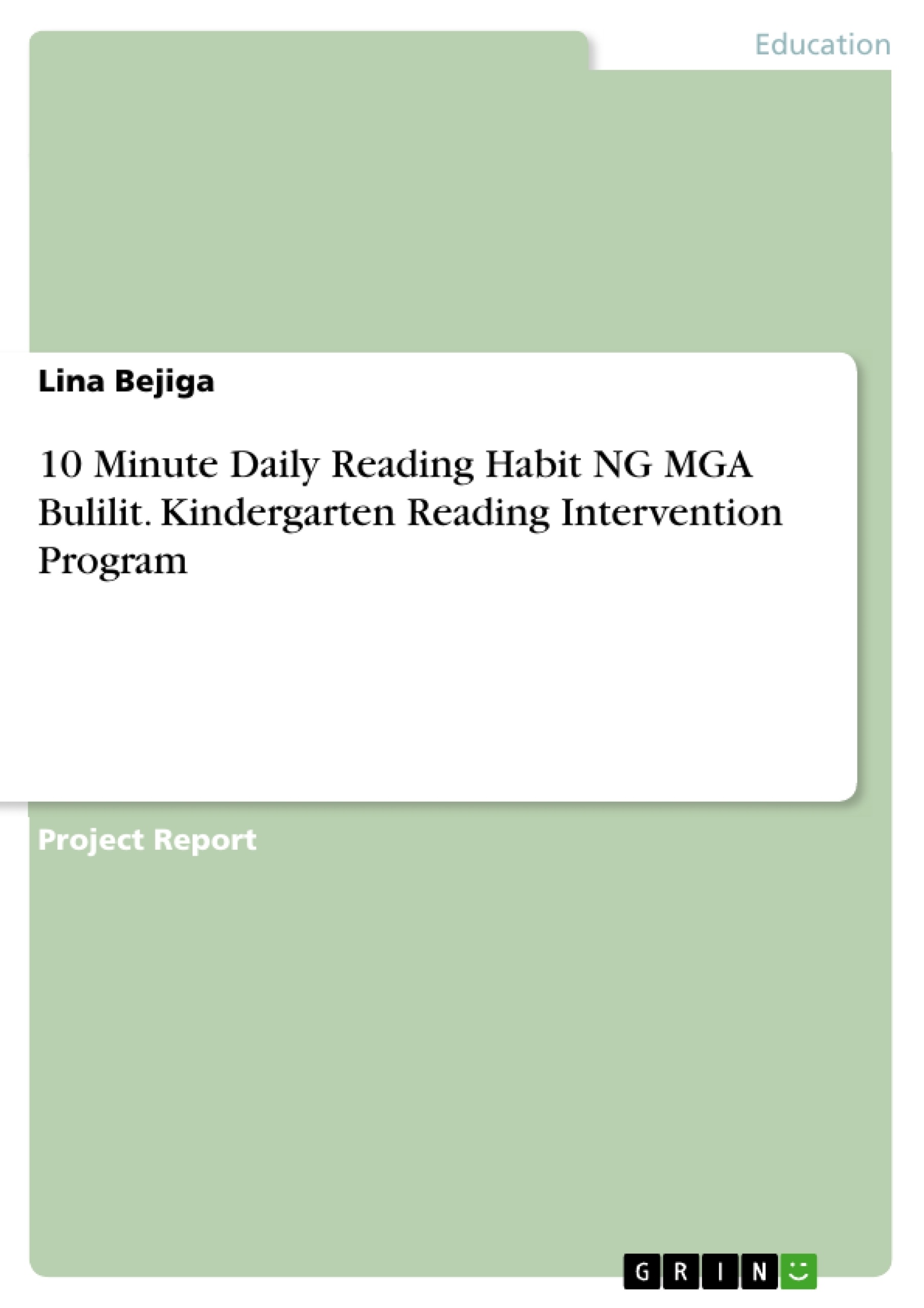The project attached hereto entitled “10 Minute Daily Reading Habit NG MGA Bulilit: A Kindergarten Reading Readiness Intervention Program” by Lina C. Bejiga aims to determine the performance of the kinder learners on letter, sound and symbol recognition based on Marungko Reading Readiness Approach and identify other positive implications of the 10-minute Daily Reading Habit. A Focused-Group Discussion was conducted to gather responses from the teachers assigned in the kindergarten. The 220 kinder learners took the Marungko Reading Readiness Letters to assess the reading readiness of the respondents. A descriptive statistic such as frequency and percentage was used to treat the data gathered. Before the intervention, 173 out of 220 kinder learners can’t recognized letter sounds and symbols but after three (3) months it significantly decreased to 65 learners. It was also noted that during the implementation of the program, there were 146 learners who can read syllables and 131 who can read words.
Inhaltsverzeichnis (Table of Contents)
- CONTEXT AND RATIONALE OF THE PROJECT
- INNOVATION AND STRATEGIES EMPLOYED
- Presentation of Data Gathered, Results and Reflections
- Advocacy and Action of the program
- Implementation: June 2017-September 2017.
- Evaluation
- BIBLIOGRAPHY
Zielsetzung und Themenschwerpunkte (Objectives and Key Themes)
This research study aimed to determine the effectiveness of a 10-minute daily reading intervention program, "10-MINUTE DAILY READING HABIT NG MGA BULILIT," in enhancing the reading readiness skills of kindergarten learners at El Salvador City Central School. The program focused on improving letter, sound, and symbol recognition, as well as syllabication and word recognition.
- The impact of the intervention program on kindergarten learners' reading readiness skills.
- The role of daily reading habits in promoting early literacy development.
- The effectiveness of the Marungko Reading Readiness Approach in assessing reading readiness.
- The importance of early intervention programs in supporting kindergarten learners.
Zusammenfassung der Kapitel (Chapter Summaries)
- CONTEXT AND RATIONALE OF THE PROJECT: This chapter emphasizes the crucial role of kindergarten readiness in children's later academic success. It highlights the need for early intervention programs to address the reading readiness challenges faced by kindergarten learners, particularly in areas like letter, sound, and symbol recognition, syllabication, and word recognition.
- INNOVATION AND STRATEGIES EMPLOYED: This chapter likely details the specific strategies and methods implemented within the "10-MINUTE DAILY READING HABIT NG MGA BULILIT" program. It may discuss the use of the Marungko Reading Readiness Approach and other innovative teaching techniques to foster reading readiness skills among the kindergarten learners.
- Presentation of Data Gathered, Results and Reflections: This chapter likely presents the findings of the research, including data on the kindergarten learners' performance before and after the intervention program. It may highlight the impact of the program on letter, sound, and symbol recognition, syllabication, and word recognition.
Schlüsselwörter (Keywords)
This research study focuses on the impact of a daily reading intervention program on kindergarten learners' reading readiness skills. Key themes include early literacy development, reading readiness, intervention programs, Marungko Reading Readiness Approach, and the importance of daily reading habits in promoting early literacy development.
- Quote paper
- Lina Bejiga (Author), 2017, 10 Minute Daily Reading Habit NG MGA Bulilit. Kindergarten Reading Intervention Program, Munich, GRIN Verlag, https://www.grin.com/document/437706



